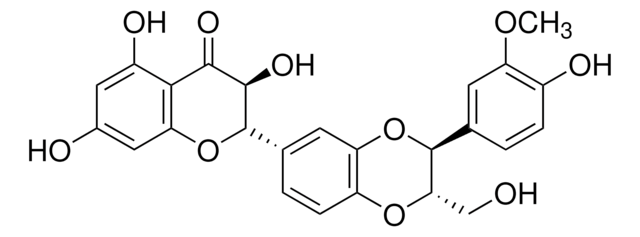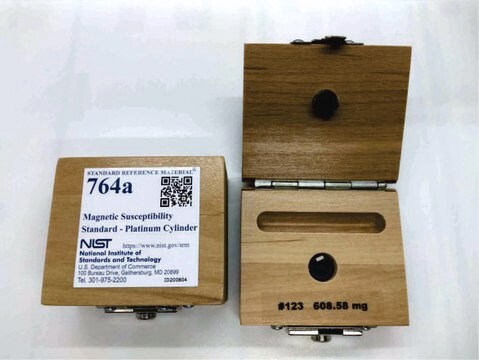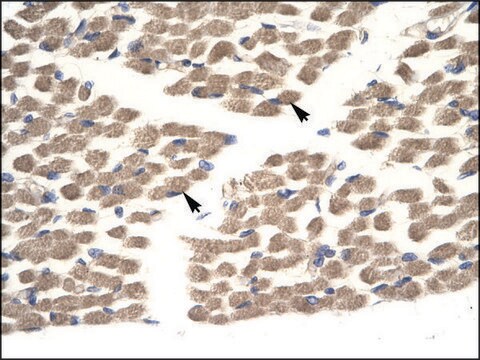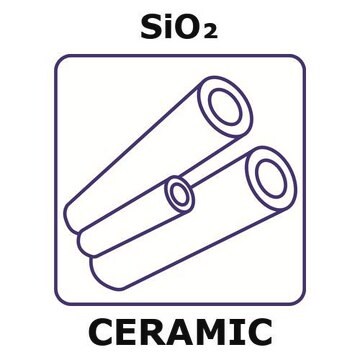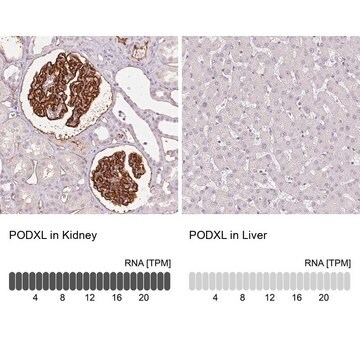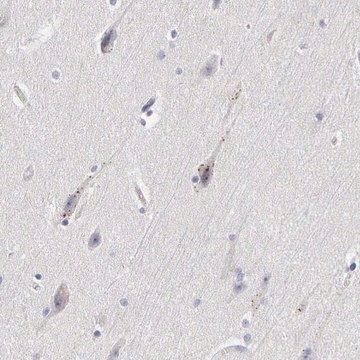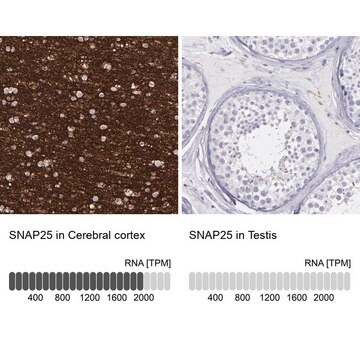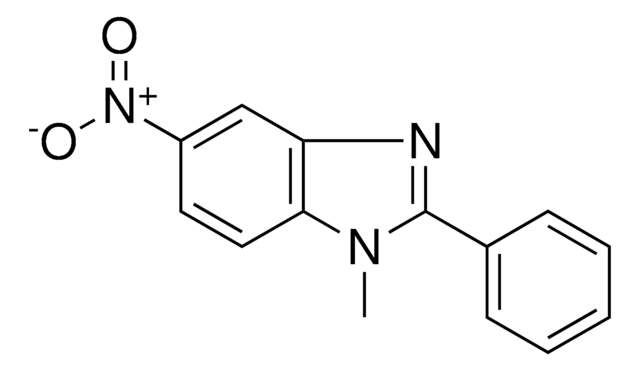推荐产品
生物源
rabbit
共軛
unconjugated
抗體表格
affinity isolated antibody
抗體產品種類
primary antibodies
無性繁殖
polyclonal
形狀
buffered aqueous solution
分子量
antigen 48 kDa
物種活性
mouse, rat
技術
immunohistochemistry: suitable using suitable for IHC on rat brain perfused with 4% paraformaldehyde
microarray: suitable
western blot: 0.5-1.0 μg/mL using mouse brain and rat brain extract (S1 fraction)
UniProt登錄號
運輸包裝
dry ice
儲存溫度
−20°C
目標翻譯後修改
unmodified
基因資訊
mouse ... Cadm1(54725)
rat ... Cadm1(363058)
一般說明
Anti-SynCAM is developed in rabbit using a synthetic peptide corresponding to amino acids located at the C-terminus of mouse SynCAM1 conjugated to keyhole limpet hemocyanin (KLH) as immunogen. Synaptic cell adhesion molecule (SynCAM) is a brain-specific protein which has an immunoglobulin domain. It binds to intracellular PDZ-domain protein. SynCAMs have also been called nectin-like molecules (Necls). SynCAM1 is also known as Necl-2/ IGSF4/ RA175/ SgIGSF/ TSLC1. SynCAM contains an N-terminal signal peptide, three extracellular Ig domains, a single transmembrane region and a short C-terminal cytoplasmic domain. It is expressed only in brain and is localized to synapses.
SynCAM proteins consist of a C-terminal cytoplasmic domain, an N-terminal signaling domain and three extracellular immunoglobulin domains.. Anti-SynCAM antibody is specific for SynCAM in mouse and rats. The SynCAM1 immunizing peptide (mouse, amino acids 431-445) specifically inhibits the staining of the SynCAM band in immunoblotting.
免疫原
This immunogen sequence is identical in human SynCAM1, highly conserved (90%) in the splice variant SynCAM2 and displays limited homology (55%) to SynCAM3.
synthetic peptide corresponding to amino acids 431-445 located at the C-terminus of mouse SynCAM1 conjugated to KLH.
應用
- Anti-SynCAM antibody produced in rabbit has been used in:
- immunoprecipitation
- immunoblotting
- immunohistochemistry
- immunostaining
- immunofluorescence
生化/生理作用
SynCAM is a neurological cell-adhesion protein that regulates the formation of synapses. Expression of synaptic cell adhesion molecule (SynCAM) in non-neuronal cells induces synaptic formation and affects synaptic function in hippocampal neurons. It functions as a homophilic cell adhesion molecule at the synapse. SynCAM is believed to interact with PDZ-domain synaptic proteins CASK and syntenin via its cytoplasmic tail.
外觀
0.01M 磷酸缓冲盐溶液,pH 7.4,含 15mM 叠氮化钠。
免責聲明
Unless otherwise stated in our catalog or other company documentation accompanying the product(s), our products are intended for research use only and are not to be used for any other purpose, which includes but is not limited to, unauthorized commercial uses, in vitro diagnostic uses, ex vivo or in vivo therapeutic uses or any type of consumption or application to humans or animals.
未找到合适的产品?
试试我们的产品选型工具.
儲存類別代碼
10 - Combustible liquids
水污染物質分類(WGK)
WGK 3
閃點(°F)
Not applicable
閃點(°C)
Not applicable
個人防護裝備
Eyeshields, Gloves, multi-purpose combination respirator cartridge (US)
Markus Missler
Trends in neurosciences, 26(4), 176-178 (2003-04-12)
A growing number of candidate genes has been implicated in linking the two sides of a synapse but definitive proof of a specific role for many of them is still scarce. Exploiting the vast amount of sequence data, a novel
SynCAM, a synaptic adhesion molecule that drives synapse assembly
Biederer T, et al.
Science, 297(5586), 1525-1531 (2002)
Johan Botling et al.
Clinical cancer research : an official journal of the American Association for Cancer Research, 19(1), 194-204 (2012-10-04)
Global gene expression profiling has been widely used in lung cancer research to identify clinically relevant molecular subtypes as well as to predict prognosis and therapy response. So far, the value of these multigene signatures in clinical practice is unclear
Cadm1 expression and function in the mouse lens
De MA, et al.
Investigative Ophthalmology & Visual Science, 52(5), 2293-2299 (2011)
Ying Gao et al.
PloS one, 8(5), e64316-e64316 (2013-06-07)
Nectin-like molecule-2 (Necl-2), a junction molecule, is exclusively expressed by spermatogenic cells. It mediates homophilic interaction between germ cells and heterophilic interaction between Sertoli and germ cells. Knockout studies have shown that loss of Necl-2 causes male infertility, suggesting Necl-2-based
我们的科学家团队拥有各种研究领域经验,包括生命科学、材料科学、化学合成、色谱、分析及许多其他领域.
联系技术服务部门